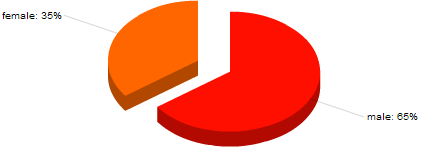Marco Casario from italian Comtaste had a good presentation at Web 2.0 Expo in Berlin today comparing Adobe Flex to JavaFX, Lazlo, Microsoft Silverlight, AJAX and XUL (full name of the presentation is “Choosing th Final RIA Path or Choosing the Appropriate RIA Technology”). In this comparison Adobe Flex won both on the level of maturity, size of active community, small learning curve, multimedia features, usability and spread of the Flash plugin that now reaches 98% of internet users. Of course your choice of technology depends largely on the specifics of your project, but this is another indicator that Adobe Flex is on fire.
Flex & AIR
Adobe Flex is a way to easily develop Flash programs. It is based on MXML and when compiled Flex code becomes a Flash .swf file. That means that it can run in any browser that has the Flash plugin installed. What I really like with Flex is that you can write the frontend in Flex and then use whatever language you want for the backend. Using REST services in Flex is super easy, so as long as your backend can talk REST you can connect to the frontend that way. I like this idea since I would prefer PHP for the backend of whatever app I do since it is widely supported, have a very active developer community and there are lots of PHP programmers all around the world.
AIR stands for Adobe Integrated Runtime (formerly Apollo, see my “How to be cool in a Web 2.0 crowd” on tips on how to use this fact to increase your geek coolness) and it allows you to develop desktop applications using Flex or HTML/JavaScript. AIR applications can run on most platforms (Mac, Windows, Linux etc) and can access local files etc just like any other desktop app. The fact that it is now simple to write platform independant desktop applications using only HTML/JavaScript is really powerful.
Adobe MAX
About a month I was at the Adobe MAX conference in Chicago. Since that is where all Adobe-fanboys gather there were quite a few Hallelujha moments, and maybe I am somewhat influenced by that. One thing was clear from MAX though, Adobe are pushing Flex and AIR with all it’s marketing might. After having an almost 100% market share on software for web designers (Photoshop, Illustrator, Dreamweaver etc) they are now really focusing on the web developers. They are doing a great job making powerful tools that makes development a charm, their Eclipse based Flex Builder is one of the best IDE’s I have used.
Mashups & Flex
Building Mashups in Flex is easy since the REST support is really good. I had a presentation at Adobe MAX dealing with the need for mashups and webscraping in general and combining Kapow Mashup Server and Adobe Flex in particular…




